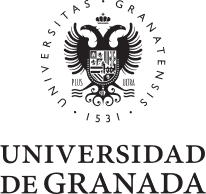Lung ultrasound for the early diagnosis of COVID-19 pneumonia: an international multicenter study
Volpicelli, Giovanni; Gargani, Luna; Perlini, Stefano; Spinelli, Stefano; Barbieri, Greta; Lanotte, Antonella; Casasola, Gonzalo Garcia; Nogue-Bou, Ramon; Lamorte, Alessandro; Agricola, Eustachio; Villen, Tomas; Deol, Paramjeet Singh; Nazerian, Peiman; Corradi, Francesco; Stefanone, Valerio; Fraga, Denise Nicole; Navalesi, Paolo; Ferre, Robinson; Boero, Enrico; Martinelli, Giampaolo; Cristoni, Lorenzo; Perani, Cristiano; Vetrugno, Luigi; McDermott, Cian; Miralles-Aguiar, Francisco; Secco, Gianmarco; Zattera, Caterina; Salinaro, Francesco; Grignaschi, Alice; Boccatonda, Andrea; Giostra, Fabrizio; Infante, Marta Nogue; Covella, Michele; Ingallina, Giacomo; Burkert, Julia; Frumento, Paolo; Forfori, Francesco; Ghiadoni, Lorenzo
Publicación: INTENSIVE CARE MEDICINE
2021
VL / 47 - BP / 444 - EP / 454
abstract
Purpose To analyze the application of a lung ultrasound (LUS)-based diagnostic approach to patients suspected of COVID-19, combining the LUS likelihood of COVID-19 pneumonia with patient's symptoms and clinical history. Methods This is an international multicenter observational study in 20 US and European hospitals. Patients suspected of COVID-19 were tested with reverse transcription-polymerase chain reaction (RT-PCR) swab test and had an LUS examination. We identified three clinical phenotypes based on pre-existing chronic diseases (mixed phenotype), and on the presence (severe phenotype) or absence (mild phenotype) of signs and/or symptoms of respiratory failure at presentation. We defined the LUS likelihood of COVID-19 pneumonia according to four different patterns: high (HighLUS), intermediate (IntLUS), alternative (AltLUS), and low (LowLUS) probability. The combination of patterns and phenotypes with RT-PCR results was described and analyzed. Results We studied 1462 patients, classified in mild (n = 400), severe (n = 727), and mixed (n = 335) phenotypes. HighLUS and IntLUS showed an overall sensitivity of 90.2% (95% CI 88.23-91.97%) in identifying patients with positive RT-PCR, with higher values in the mixed (94.7%) and severe phenotype (97.1%), and even higher in those patients with objective respiratory failure (99.3%). The HighLUS showed a specificity of 88.8% (CI 85.55-91.65%) that was higher in the mild phenotype (94.4%; CI 90.0-97.0%). At multivariate analysis, the HighLUS was a strong independent predictor of RT-PCR positivity (odds ratio 4.2, confidence interval 2.6-6.7, p < 0.0001). Conclusion Combining LUS patterns of probability with clinical phenotypes at presentation can rapidly identify those patients with or without COVID-19 pneumonia at bedside. This approach could support and expedite patients' management during a pandemic surge.
MENTIONS DATA
Clinical Medicine
-
0 Twitter
-
2 Wikipedia
-
0 News
-
711 Policy
Publicaciones similares en Clinical Medicine





